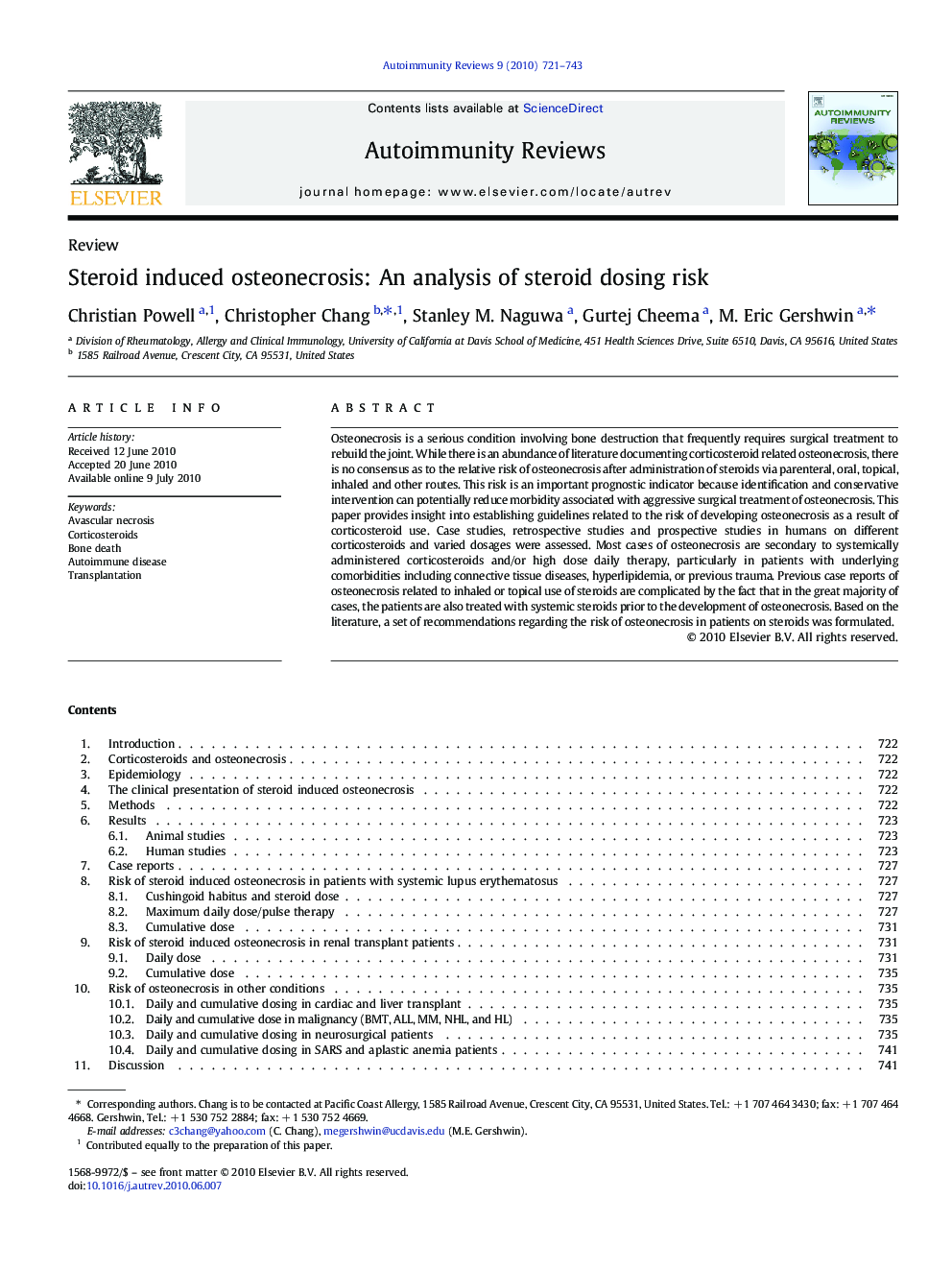| Article ID | Journal | Published Year | Pages | File Type |
|---|---|---|---|---|
| 3342134 | Autoimmunity Reviews | 2010 | 23 Pages |
Osteonecrosis is a serious condition involving bone destruction that frequently requires surgical treatment to rebuild the joint. While there is an abundance of literature documenting corticosteroid related osteonecrosis, there is no consensus as to the relative risk of osteonecrosis after administration of steroids via parenteral, oral, topical, inhaled and other routes. This risk is an important prognostic indicator because identification and conservative intervention can potentially reduce morbidity associated with aggressive surgical treatment of osteonecrosis. This paper provides insight into establishing guidelines related to the risk of developing osteonecrosis as a result of corticosteroid use. Case studies, retrospective studies and prospective studies in humans on different corticosteroids and varied dosages were assessed. Most cases of osteonecrosis are secondary to systemically administered corticosteroids and/or high dose daily therapy, particularly in patients with underlying comorbidities including connective tissue diseases, hyperlipidemia, or previous trauma. Previous case reports of osteonecrosis related to inhaled or topical use of steroids are complicated by the fact that in the great majority of cases, the patients are also treated with systemic steroids prior to the development of osteonecrosis. Based on the literature, a set of recommendations regarding the risk of osteonecrosis in patients on steroids was formulated.
